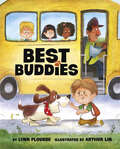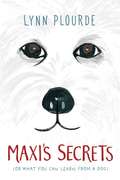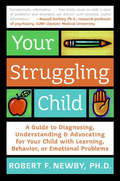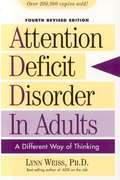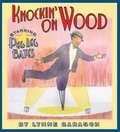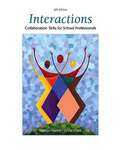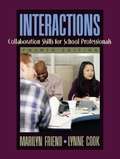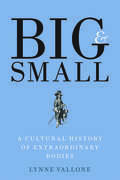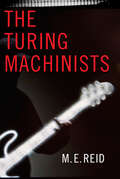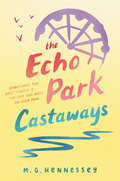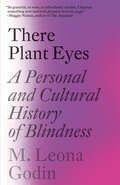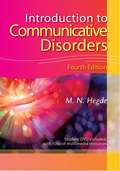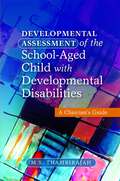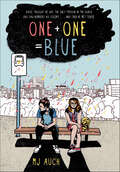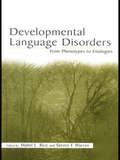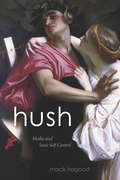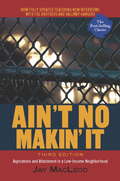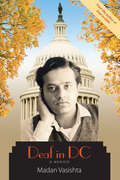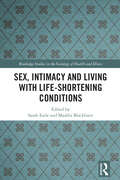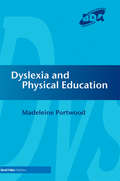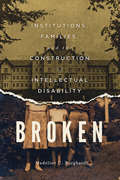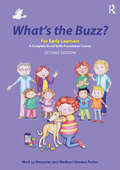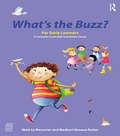- Table View
- List View
Best Buddies
by Lynn PlourdeBest Buddies introduces a boy-and-dog duo who are BEST FRIENDS and who do EVERYTHING together! So how will they manage being apart when the boy heads to school for the first time? Find out how a clever boy with Down syndrome and his loyal pet find the perfect way to feel close even when they can’t be together. A sweet, inspiring story that will ease concerns about the first day of school and other big changes for kids.
Maxi's Secrets: (or what you can learn from a dog)
by Lynn PlourdeWhen a BIG, lovable, does-it-her-way dog wiggles her way into the heart of a loudmouth pipsqueak of a boy, wonderful things happen that help him become a bigger, better person. <P><P>With its diverse cast, authentic narrator, and perfect blend of spot-on middle-grade humor, drama, and wisdom, this powerful debut is relatable, funny, bittersweet, and full of heart. <P><P> Timminy knows that moving to a new town just in time to start middle school when you are perfect bully bait is less than ideal. But he gets a great consolation prize in Maxi--a gentle giant of a dog who the family quickly discovers is deaf. <P><P>Timminy is determined to do all he can to help Maxi--after all, his parents didn't return him because he was a runt. <P><P>But when the going gets rough for Timminy, who spends a little too much time getting shoved into lockers at school, Maxi ends up being the one to help him--along with their neighbor, Abby, who doesn't let her blindness define her and bristles at Timminy's "poor-me" attitude. <P><P>It turns out there's more to everyone than what's on the surface, whether it comes to Abby, Maxi, or even Timminy himself.
Your Struggling Child: A Guide to Diagnosing, Understanding, and Advocating for Your Child with Learning, Behavior, or Emotional Problem
by Lynn Sonberg Robert F. NewbyHere is a practical, compassionate book parents can turn to when they first recognize that their child has a "problem" -- but aren't sure what it is or where to seek help. At this very moment, millions of children across the U.S. are falling behind in school, acting out impulsively at home, having problems making friends, suffering dramatic mood swings, and more. Their parents are frustrated and afraid, aware that something's wrong, but not sure where to turn for help or how to cope with their child's behavior. "Is it a learning disorder, ADHD, anxiety disorder, or some combination?" they wonder. "Are these moods and behaviors normal or abnormal? Will my child outgrow them?" This book by a noted neuropsychologist explains the different and overlapping symptoms of learning, mood, and behavior disorders and guides parents in getting the right diagnosis and treatment. Dr. Newby demystifies the process and empowers parents. Step by step, he explains: --How to observe and chart your child's behavior--a critical diagnostic tool --What to expect during the evaluation and treatment process --How to partner with medical and school professionals to assist your child and what to do when conflicts arise Clear and comprehensive, this supportive guide will be every parent's first line of defense in helping a troubled child.
Attention Deficit Disorder in Adults
by Lynn WeissADD in Adults enjoys steady sales year after year. Since its last revision in 1997, dozens of new treatments and philosophies about ADD and ADHD have met with storms of controversy and great media attention. As we've seen her do time and again, Lynn Weiss cuts through the noise and gets down to the point in a human, caring, and professional way. People turn to the Weiss library for a breath of fresh air on the ADD turmoil. Is it an allergy? A chemical imbalance? A genetic thing? Lynn's answer: "Who cares?" The new edition not only touches on and dispels the most recent clinical findings, it also emphasizes the bigger perspective, focusing on the humanitarian, economic, empowerment, and diversity issues facing all of us on the ADD continuum today.
Knockin' on Wood
by Lynne BaraschThis biography tells the story of Clayton "Peg Leg" Bates (1907-1998), an African American who overcame the hardship of losing a leg at the age of 12 in a factory accident and went on to become a world-renowned tap dancer.
Interactions: Collaboration Skills for School Professionals
by Marilyn Friend Lynne CookTargeted at services for students with special needs, this text provides collaboration techniques between educators fraternity - special educators, general educators and related services professionals - to work towards effective communication framework.
Interactions: Collaboration Skills for School Professionals (4th Edition)
by Marilyn Friend Lynne CookInteractions, Fourth Edition, provides a cutting-edge look at how teams of school professionals-classroom teachers, special education teachers, and counselors-can effectively work together to provide a necessary range of services to students with special needs. This book addresses collaboration as a style, with accompanying knowledge and skills, which guides practices in many education efforts. As a result, future teachers learn how to collaborate with school professionals and families to help special education students who are more often being placed in general classroom settings.
Big and Small: A Cultural History of Extraordinary Bodies
by Lynne ValloneA groundbreaking work that explores human size as a distinctive cultural marker in Western thought Author, scholar, and editor Lynne Vallone has an international reputation in the field of child studies. In this analytical tour-de-force, she explores bodily size difference—particularly unusual bodies, big and small—as an overlooked yet crucial marker that informs human identity and culture. Exploring miniaturism, giganticism, obesity, and the lived experiences of actual big and small people, Vallone boldly addresses the uncomfortable implications of using physical measures to judge normalcy, goodness, gender identity, and beauty. This wide-ranging work surveys the lives and contexts of both real and imagined persons with extraordinary bodies from the seventeenth century to the present day through close examinations of art, literature, folklore, and cultural practices, as well as scientific and pseudo-scientific discourses. Generously illustrated and written in a lively and accessible style, Vallone’s provocative study encourages readers to look with care at extraordinary bodies and the cultures that created, depicted, loved, and dominated them.
The Turing Machinists
by M. E. ReidAt seventeen, Del’s world seems to be falling apart. He’s managed his Asperger’s well, has a solid group of friends in his special needs class at school, and even manages to get by among people who don’t understand his brand of communication. But his parents are splitting up, and Del is certain he can save his family. To do it, he decides he needs to live out his father’s dream of musical stardom. He gets together with some of his friends and they form The Turing Machinists, an all-Asperger’s rock band. But they’ll need help – and Del seeks that help in the form of his neighbour, a reclusive rock legend who would rather have nothing to do with the music scene.
The Echo Park Castaways
by M. HennesseyFrom the author of The Other Boy comes a poignant and heartfelt novel that explores what it means to be a family. Perfect for fans of Counting by 7s. <P><P>Nevaeh, Vic, and Mara are veterans of the Los Angeles foster care system. For over a year they’ve been staying with Mrs. K in Echo Park. Vic spends most of his time living in a dream world, Mara barely speaks, and Nevaeh is forced to act as a back-up parent. Though their situation isn’t ideal, it’s still their best home yet. <P><P>Then Child Protective Services places Quentin in the house, and everything is turned upside down. Nevaeh really can’t handle watching over anyone else, especially a boy on the autism spectrum. Meanwhile, Quentin is having trouble adjusting and attempts to run away. <P><P>So when Vic realizes Quentin just wants to see his mom again, he plans an “epic quest” to reunite them. It could result in the foster siblings getting sent to different group homes. But isn’t family always worth the risk?
Identifying and Nurturing Math Talent
by M. Katherine GavinNow more than ever, we must cultivate top-notch mathematicians in order to address the needs, issues, and problems of the 21st century. Identifying and Nurturing Math Talent provides information for teachers, administrators, and parents interested in identifying and supporting mathematical talent in children and adolescents. This book offers practical advice on identifying mathematical talent, developing rigorous mathematics curricula, preparing highly qualified teachers, and locating specialized programs and schools in order to support the learning requirements of mathematically talented students.
There Plant Eyes: A Personal and Cultural History of Blindness
by M. Leona GodinFrom Homer to Helen Keller, from Dune to Stevie Wonder, from the invention of braille to the science of echolocation, M. Leona Godin explores the fascinating history of blindness, interweaving it with her own story of gradually losing her sight. There Plant Eyes probes the ways in which blindness has shaped our ocularcentric culture, challenging deeply ingrained ideas about what it means to be &“blind.&” For millennia, blindness has been used to signify such things as thoughtlessness (&“blind faith&”), irrationality (&“blind rage&”), and unconsciousness (&“blind evolution&”). But at the same time, blind people have been othered as the recipients of special powers as compensation for lost sight (from the poetic gifts of John Milton to the heightened senses of the comic book hero Daredevil). Godin—who began losing her vision at age ten—illuminates the often-surprising history of both the condition of blindness and the myths and ideas that have grown up around it over the course of generations. She combines an analysis of blindness in art and culture (from King Lear to Star Wars) with a study of the science of blindness and key developments in accessibility (the white cane, embossed printing, digital technology) to paint a vivid personal and cultural history. A genre-defying work, There Plant Eyes reveals just how essential blindness and vision are to humanity&’s understanding of itself and the world.
Introduction to Communicative Disorders (4th edition)
by M. N. HegdeIn this update of the 2001, 1995, and 1991 editions, Hegde (communication sciences and disorders, California State U. , Fresno) introduces the rapidly growing science of communication and profession of communicative disorders. Coverage includes a new chapter on literacy skills in children and the role of the speech-language pathologist in literacy intervention; profiles of speech-language pathologists and audiologists; and expanded material on audiology, audiology rehabilitation, and disorders of swallowing. The text includes study questions; information on professional education, organizations, and standards; a glossary.
Your Hour
by M. RaymondFather Raymond, a Trappist monk, tells several stories of people who have always had deep faith in God's love and mercy, or who have come to know God through suffering and meditation. Each story is a beautiful and thought-provoking meditation on life and the afterlife.
Developmental Assessment of the School-Aged Child with Developmental Disabilities
by M. S. ThambirajahChildren and adolescents with emotional and behavioural problems who are referred to mental health services for assessment often have undiagnosed mild learning disabilities, and this guide is written for clinicians involved in making such assessments. It provides full guidance on common developmental disorders and their assessment, focusing on mild to moderate disabilities in the school-aged child. It covers intellectual disabilities, dyslexia, dyscalculia (mathematical disability), autism spectrum disorders, speech and language impairment, developmental coordination disorder, and emotional and personality development. Each chapter includes an account of normal development, including developmental milestones, an overview of the disorder, and its clinical assessment. This important professional guide will be invaluable for all child health and mental health professionals and trainees, including paediatricians, psychiatrists, mental health workers, clinical psychologists and educational psychologists.
One + One = Blue
by MJ AuchTwelve year-old Basil knows he's special—he's been associating numbers with colors since he was a kid. His gift (or curse) has turned him into somewhat of a loner, but his world begins to change when he meets Tenzie, the new girl in school who has similar freakisms. She, too, has synesthesia (a condition in which one type of stimulation evokes the sensation of another). At first, Basil is somewhat annoyed with Tenzie's pushiness, but after Basil's estranged mother returns, his life is turned upside down . . . and Tenzie may be the only person to help him put it back together again.Once again, MJ Auch has written a thoughtful coming-of-age novel that explores friendship, family, and fitting in, in One Plus One Equals Blue.
Developmental Language Disorders: From Phenotypes to Etiologies
by Mabel L. Rice Steven F. WarrenDevelopmental Language Disorders: From Phenotypes to Etiologies is based on the recent conference of the same name sponsored by the Merrill Advanced Studies Center of the University of Kansas. In the past 10 years, considerable advances have taken place in our understanding of genetic and environmental influences on language disorders in children. Significant research in behavioral phenotypes, associated neurocortical processes, and the genetics of language disorders has laid the foundation for further breakthroughs in understanding the reasons for overlapping etiologies, as well as the unique aspects of some phenotypes. Too often the findings are disseminated in a fragmented way because of the discrete diagnostic categories of affectedness. This volume attempts to assimilate and integrate the findings of the transdisciplinary research toward a more coherent picture of behavioral descriptions, brain imaging studies, genetics, and intervention technologies in language impairment. The contributing authors are all scholars with active programs of research funded by the National Institutes of Health involving diverse clinical groups of children with language impairments.
Hush: Media and Sonic Self-Control (Sign, Storage, Transmission)
by Mack HagoodFor almost sixty years, media technologies have promised users the ability to create sonic safe spaces for themselves—from bedside white noise machines to Beats by Dre's “Hear What You Want” ad campaign, in which Colin Kaepernick's headphones protect him from taunting crowds. In Hush, Mack Hagood draws evidence from noise-canceling headphones, tinnitus maskers, LPs that play ocean sounds, nature-sound mobile apps, and in-ear smart technologies to argue the true purpose of media is not information transmission, but rather the control of how we engage our environment. These devices, which Hagood calls orphic media, give users the freedom to remain unaffected in the changeable and distracting spaces of contemporary capitalism and reveal how racial, gendered, ableist, and class ideologies shape our desire to block unwanted sounds. In a noisy world of haters, trolls, and information overload, guarded listening can be a necessity for self-care, but Hagood argues our efforts to shield ourselves can also decrease our tolerance for sonic and social difference. Challenging our self-defeating attempts to be free of one another, he rethinks media theory, sound studies, and the very definition of media.
Ain't No Makin' It
by MacleodAuthor Jay MacLeod OCOs classic ethnographyOCoa defining work on the cycle of social reproduction and inequality as lived through the young men from the Clarendon Heights housing projectOConow includes a third section that continues the lives of the original Brothers and Hallway Hangers through new interviews and analysis.
Deaf in DC: A Memoir
by Madan VasishtaIn his first memoir, Madan Vasishta described being a deaf boy in his homeland India, where "deaf" meant someone who is not human. After rising from herding cattle to being a respected photographer in Delhi, his first memoir concluded with his acceptance at Gallaudet College far away in America. Vasishta's new memoir begins with his arrival in Washington, DC in 1967 with $40.00 in his pocket and very little knowledge of the new worlds he was entering. Vasishta faced myriad challenges from the outset-- he knew no American Sign Language and could not speech read, yet he found himself thrust into classes at Gallaudet two weeks into the semester. Cultural differences mystified him, such as how all American car accidents were someone else's fault even when one's car hits a stationary object. He was amazed that his fellow students did not deride him for his mistakes, unlike in India where he would have been scorned for his weakness. After five years, he returned home to India for a visit and was stunned to learn that he no longer fit in, that "even if you do not have an American Dream, the American Dream will have you." Deaf in DC follows Vasishta through half a century living in America. He witnessed the transformation from facing bias as a deaf, foreign man of color who could not get a job despite having a Ph.D., to receiving five offers as a school superintendent in the wake of the Civil Rights movement and Deaf President Now. His new memoir reflects a genuine worldview informed by the sage perceptions of a person who has lived widely in many worlds.
Sex, Intimacy and Living with Life-Shortening Conditions
by Sarah Earle Maddie BlackburnThis multi-disciplinary and inclusive collection brings together theoretically informed and empirically focused research on sex, intimacy and reproduction in relation to young people and adults with life-shortening conditions. Advances in healthcare mean that increasing numbers of young people with life-shortening conditions are transitioning into adulthood. Issues such as sex and intimacy, dating and relationships, fertility and having children are increasingly relevant to them and to the people that support them, including families, carers, practitioners and professional education, health and social care agencies. This three-part book explores the relevance and significance of this field, examines everyday experiences, and highlights the challenges faced by individuals and organisations in addressing the needs of such people in daily life and in the context of practice. Drawing on perspectives from sociology, disability studies, epidemiology, health policy, psychotherapy, legal studies, queer studies and nursing, this ground-breaking volume is written by academics, policy makers, practitioners and experts by experience. It is an essential read for all those practising and researching in the fields of sexuality, chronic illness and disability and transition.
Dyslexia and Physical Education
by Madeleine PortwoodMuch research has focused on dyslexia and co-ordination. This book examines the literature and provides a framework to support pupils with dyslexia, not only during PE lessons but in less structured environments, for example during break time when pupils are likely to be involved in physical activities.
Broken: Institutions, Families, and the Construction of Intellectual Disability (McGill-Queen's/Associated Medical Services Studies in the History of Medicine, Health, and Society #50)
by Madeline C. BurghardtAfter 133 years of operation, the 2009 closure of Ontario's government-run institutions for people with intellectual disabilities has allowed accounts of those affected to emerge. Madeline Burghardt draws from narratives of institutional survivors, their siblings, and their parents to examine the far-reaching consequences of institutionalization due to intellectual difference. Beginning with a thorough history of the rise of institutions as a system to manage difference, Broken provides an overview of the development of institutions in Ontario and examines the socio-political conditions leading to families' decisions to institutionalize their children. Through this exploration, other themes emerge, including the historical and arbitrary construction of intellectual disability and the resulting segregation of those considered a threat to the well-being of the family and society; the overlap between institutionalization and the workings of capitalism; and contemporaneous practices of segregation in Canadian history, such as Indian residential schools. Drawing from people's direct, lived experiences, the second half of the book gathers poignant accounts of institutionalization's cascading effects on family relationships and understandings of disability, ranging from stories of personal loss and confusion to family breakage. Adding to a growing body of work addressing Canada's treatment of historically marginalized peoples, Broken exposes the consequences of policy based on socio-political constructions of disability and difference, and of the fundamentally unjust premise of institutionalization.
What's the Buzz? For Early Learners: A Complete Social Skills Foundation Course
by Mark Le Messurier Madhavi Nawana ParkerFor many, social thinking is hard-wired at birth and strengthens naturally through experiences. However, for a variety of reasons, some children find it harder to think and develop socially. What’s the Buzz? For Early Learners 2e is a fully updated social and emotional literacy foundation programme for children aged 4–8 years. Following the global popularity of the first edition of the What’s the Buzz programme, this revised edition leads children through Archie’s adventures over 16 lessons, as he encounters a range of social and emotional dilemmas. Through evidence-based activities, discussion, role-play, games, and explicit social skill instruction, children learn how develop positive problem-solving skills to transfer into their everyday lives. It also focuses on developing an understanding of a diversity of ability and cultural background, helping to teach children how to ‘read’ the emotional needs of others, show empathy, and increase self-awareness. Clinically trialled and evaluated, this lively resource has been used successfully around the globe to teach children in building and maintaining healthy relationships, understanding and regulating their own emotions, and generally becoming thoughtful citizens. Enriched with visual materials and activity sheets to accompany each lesson, this is a must-have resource for allied health professionals and teachers in both special and mainstream settings. It is suitable for whole-class or small-group intervention.
What's the Buzz? For Early Learners: A complete social skills foundation course
by Mark Le Messurier Madhavi Nawana ParkerFor many, social thinking is hard-wired at birth and strengthens, quite naturally, through progressive experiences and encounters with others. However, for a variety of reasons, some children find it harder to think socially, develop socially and use their social tools suitably when it really counts. ‘What’s the Buzz?’ is the original social skills programme and became an instant best-seller, used by practitioners around the globe with children and young people, helping them to successfully transfer these skills into their everyday lives. What’s the Buzz? For Early Learners : is a simple, structured programmes to teach students in early learning and early primary school settings, within the 4 to 7 year age range. is designed to bring children together, including those who may be on the autistic spectrum explicitly demonstrates methods of how children can get along with one another and nurture friendship groups. Uses a developmental model to ensure its relevance throughout By drawing on the modelling of targeted social skills, role play, explicit guidance, feedback and games, this resource is imaginative, very practical and is enhanced with visual materials and worksheets to accompany each lesson. http://www.whatsthebuzz.net.au Also available from Routledge: Mark Le Messurier and Madhavi Nawana Parker (2011) What’s the Buzz: A Social Skills Enrichment Programme for Primary Students
